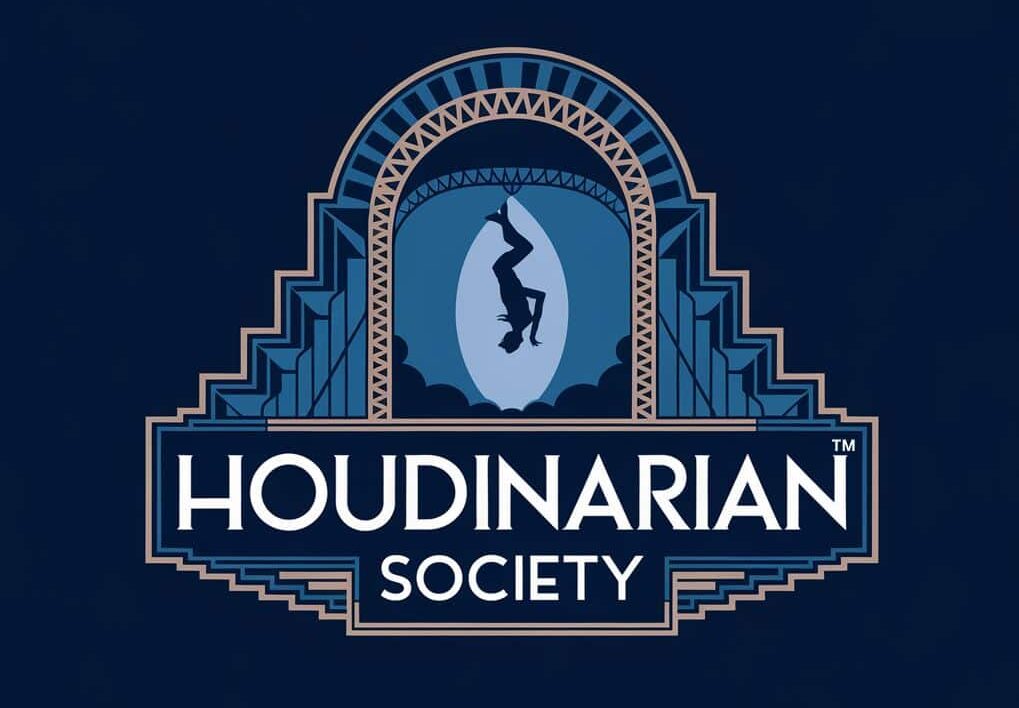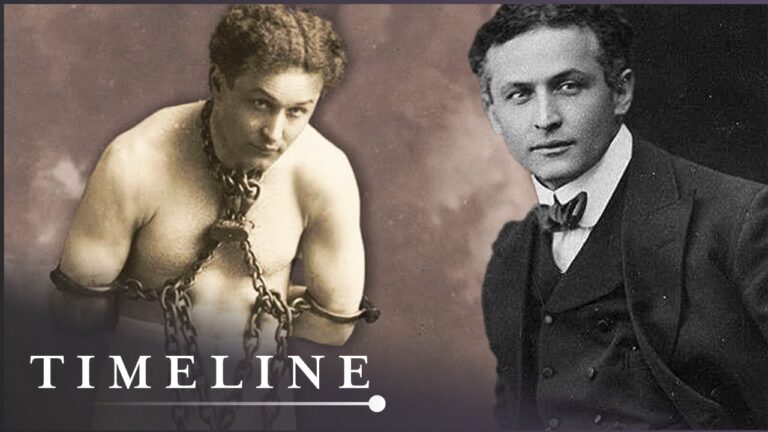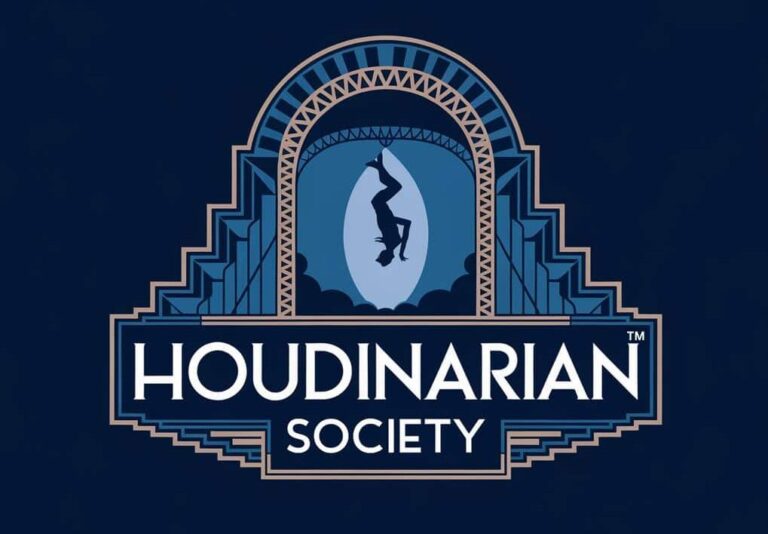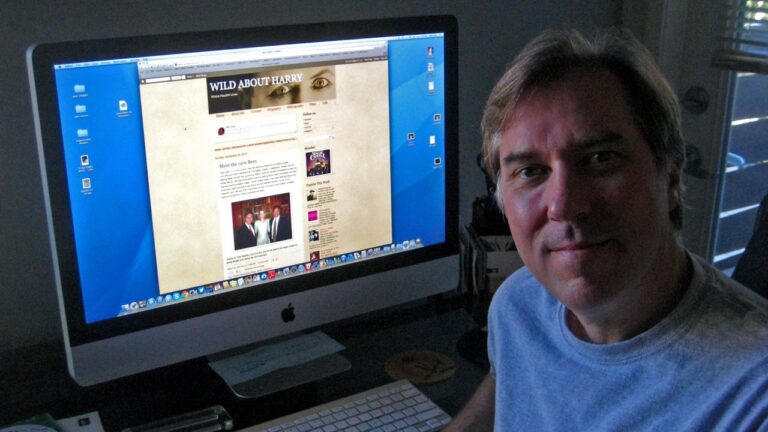The Art of Showmanship: Lessons from Houdini’s Performances for Today’s Illusionists
Harry Houdini revolutionized magic through his bold theatrical style and masterful showmanship. As magic’s most influential icon, he transformed simple escapes into grand spectacles that captured the world’s imagination.
Your success as a modern illusionist depends on learning from Houdini’s innovative spirit and theatrical approach – combining dramatic presentation with flawless technical execution. His methods of controlling his narrative and building anticipation remain essential lessons for performers today.
You can elevate your own performances by studying how Houdini turned each show into a memorable event. He knew that big, bold theatrical showmanship was the key to keeping audiences on the edge of their seats. His commitment to treating every performance as if his reputation depended on it created an aura of excitement that still influences magic today.
The Legacy Of Houdini’s Showmanship

Harry Houdini’s amazing skills transformed magic from simple tricks into grand theatrical productions. His unique blend of daring stunts, dramatic presentations, and masterful publicity shaped entertainment for generations to come.
The Historical Context Of Houdini’s Era
The late Victorian and early Edwardian periods marked a time of significant change in entertainment. Vaudeville theaters sprouted up across America, creating perfect venues for Houdini’s theatrical style.
Magic shows in the 1890s typically featured quiet performers doing basic sleight-of-hand. Houdini broke this mold by adding physical feats and death-defying escapes.
His performances captured the public’s imagination during a time of rapid technological advancement. People were fascinated by his ability to escape from modern devices like handcuffs and prison cells.
Overview Of Houdini’s Most Famous Performances
The Chinese Water Torture Cell became one of Houdini’s signature acts. He hung upside-down in a glass tank filled with water, creating intense drama as audiences watched him escape.
His captivating stage presence showed in outdoor stunts like the straitjacket escape while suspended from buildings. These free shows drew massive crowds and newspaper coverage.
Prison cell escapes demonstrated his marketing genius. He would challenge local police to lock him up, generating publicity and proving his skills.
The Enduring Influence Of Houdini On Modern Magic
Modern magicians continue to draw inspiration from Houdini’s innovative approach to publicity and presentation. His techniques for building suspense remain central to magic performances today.
You can see Houdini’s influence in how current performers use social media and television – much like he used newspapers and outdoor demonstrations to build his brand.
His emphasis on physical fitness and careful preparation set new standards for performers. Today’s magicians still follow his example of treating magic as both an art and athletic pursuit.
His legacy lives on in the way magicians combine technical skill with dramatic storytelling. The best modern performers blend classic Houdini techniques with contemporary technology.
Mastering Publicity: Houdini’s Techniques

Houdini’s publicity techniques transformed him from a struggling performer into a global sensation. His strategic self-promotion methods created massive public interest and helped establish his legendary status.
Creating Buzz: Houdini’s Public Stunts
You can learn from Houdini’s innovative public challenges and stunts. He performed dramatic escapes in front of large crowds, often hanging upside down from tall buildings in strait jackets.
The key was location selection. Houdini chose busy city intersections and prominent landmarks to gather maximum spectators. He announced his performances days in advance through newspaper ads and posters.
Each stunt had clear dramatic stakes. Whether escaping from handcuffs underwater or breaking free from prison cells, Houdini made sure audiences understood the real dangers involved.
Media Manipulation And Public Relations
Houdini mastered the art of working with newspapers. He provided compelling photo opportunities and exclusive interviews to ensure press coverage of his events.
Your publicity efforts should follow his example of creating newsworthy moments. He challenged local police departments to restrain him in their strongest handcuffs, generating headlines in every city he visited.
He wrote articles about his feats and sent them to newspapers. This gave him control over his narrative while providing ready-made content for journalists.
Building A Personal Brand: Houdini’s Approach
You must develop a distinctive persona like Houdini’s “King of Handcuffs” identity. He wore formal attire to project sophistication and mystery.
His marketing approach focused on authenticity. While other magicians relied on supernatural claims, Houdini emphasized his physical prowess and real skills.
Brand consistency mattered greatly. His posters, promotional materials, and public appearances maintained the same professional image and messaging.
He protected his reputation fiercely, challenging imitators and exposing fraudulent mediums to maintain his position as the world’s greatest escape artist.
Understanding Audience Psychology

Magic shows create deep psychological connections between performers and spectators through carefully orchestrated moments of tension and release. The most skilled magicians know exactly how to guide attention, build anticipation, and deliver satisfying payoffs.
Houdini’s Insight Into Audience Expectations
Houdini mastered the art of psychological performance by understanding what his audience craved – genuine peril mixed with triumph. His escapes worked because people desperately wanted to see him succeed.
You can use these same principles in your own performances. Start by establishing clear stakes that your audience can grasp immediately. Make the impossible seem achievable, but only through extreme skill and daring.
Build your routines around universal human desires: freedom from constraints, defiance of death, mastery over the physical world. These tap into primal hopes and fears.
Techniques For Capturing And Retaining Attention
Your success depends on maintaining laser-focused audience engagement. Use misdirection and perception control strategically – not just to hide methods, but to craft compelling moments.
Break your performance into distinct beats:
- Opening hook that grabs attention
- Rising action that builds investment
- Peak moments of astonishment
- Brief rest periods for processing
Physical positioning matters enormously. Keep your movements deliberate and meaningful. Your eyes should guide attention exactly where you want it.
Emotional Engagement: Creating Suspense And Relief
Masterful suspense comes from careful pacing. Let tension build naturally through escalating challenges. Give your audience time to feel the weight of each moment.
Your facial expressions and body language must match the emotional journey:
- Project confidence during setup
- Show focused concentration during challenges
- Display genuine relief after success
Remember to vary the emotional intensity. Not every moment can be peak drama. Create valleys of calm between your high points of tension.
Make your victories feel earned through visible effort. The audience needs to believe you’re working hard to achieve the impossible.
Theatrical Timing And Pacing
Perfect timing transforms a magic trick into an unforgettable theatrical moment. The precise control of pace and rhythm creates suspense that grips audiences and makes them lean forward in their seats.
The Structure Of Houdini’s Performances
Harry Houdini mastered the art of building tension through carefully structured performances. He started with smaller tricks to establish credibility and trust.
Your opening sequence must grab attention within the first 30 seconds. This sets expectations and draws viewers into your performance world.
The middle section requires careful pacing. Build complexity gradually, letting each trick’s impact sink in before moving to the next. Space your strongest effects strategically throughout the show.
Balancing Tension And Release
Create moments of intense concentration followed by emotional release. Your audience needs these rhythmic breaks to process what they’ve seen.
Watch their body language. When you sense growing tension, inject a moment of levity or amazement to reset their emotional state.
Physical movements should match your pacing. Quick, precise motions build excitement while deliberate, slower gestures create anticipation.
Timing Tricks: The Illusion Of Immediacy
Make each effect appear spontaneous, even though you’ve rehearsed it hundreds of times. Perfect timing eliminates any hint of preparation or setup.
Count silently in your head during key moments. This internal metronome helps maintain consistent pacing across different performances.
Practice your transitions until they become invisible. Smooth movement between effects keeps your audience focused on the magic rather than the mechanics.
Use misdirection with exact precision. The timing of where you direct attention must align perfectly with your secret moves.
Practical Applications For Modern Performers
Modern magicians can learn powerful lessons from Houdini’s proven methods to enhance their performances and build their careers. His techniques remain relevant and adaptable for today’s entertainment landscape.
Adapting Houdini’s Publicity Strategies Today
You must create buzz before your performances, just as Houdini transformed magic into theatrical masterpieces. Use social media to showcase behind-the-scenes preparation and tease upcoming acts.
Build your personal brand by focusing on what makes you unique. Choose a signature style or specialty that sets you apart from other performers.
Key Publicity Tactics:
- Document your practice sessions
- Share testimonials from amazed audience members
- Create dramatic photo opportunities
- Engage with local media outlets
- Maintain an active online presence
Enhancing Audience Engagement Through Psychology
Your success depends on understanding crowd psychology. Make eye contact with audience members and use their reactions to guide your timing.
Create moments of tension and release throughout your performance. Build anticipation before revealing the conclusion of each effect.
Remember these engagement principles:
- Start strong to capture attention
- Use silence strategically
- Ask questions that involve the audience
- Display genuine enthusiasm
- End each segment with clear punctuation
Implementing Theatrical Timing In Contemporary Acts
Perfect your sense of dramatic timing. Practice your movements until they flow naturally and purposefully.
Stage tricks require precise execution. Your gestures should be deliberate but appear effortless.
Essential Timing Elements:
- Smooth transitions between effects
- Strategic use of music cues
- Measured pacing of revelations
- Natural-looking movements
- Calculated misdirection moments
Your theatrical presence must command attention. Stand tall, move with purpose, and project confidence through your body language.






